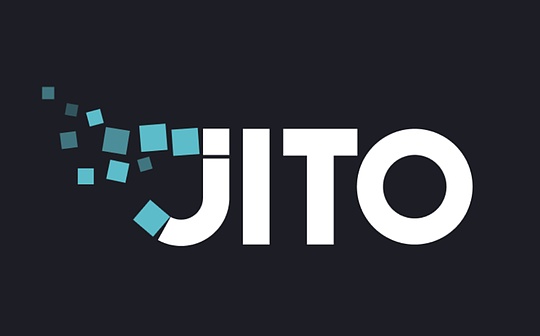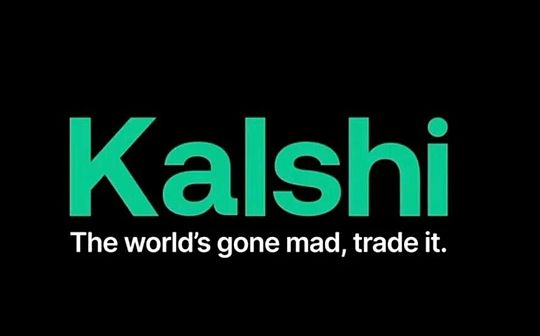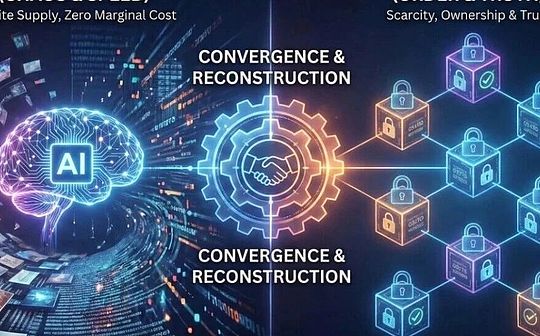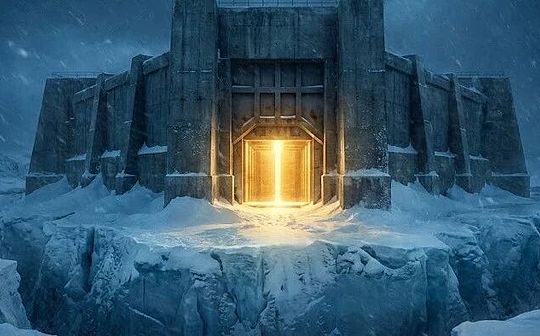
Original author: Lao Bai, ABCDELabs Source: X, @Wuhuoqiu
The public account “Orange Book” that I like very much published an article some time ago, with the title “Crypto Impotence”
“A terrible boredom spreads in the Crypto world, like the Black Death, no one knows where it started, but before you know it, you find that this disease is everywhere.”
Think about it, in recent circles, there is really nothing worth mentioning in technical hot topics. The only hot topics are concentrated on Memes such as Pepe, Trump, Jenner, etc. The last time the hot topic was the one with a technical focus may be the ones.The dualistic “Pandora”?
The primary market is also affected, but fortunately, innovation is still happening. Although I still haven’t seen anything from 0 to 1, there are still things from 1 to 10 in various tracks.
The research report in the last issue mainly focused on new ideas at each level under the Modular narrative on ETH. In this issue, let’s take a look at what “1 to 10” are available on the three tracks: BTC, Solana, and Restaking.
1.BTC
The Rune that many people are looking forward to does not bring the popularity of imagination. If BRC20 or Ordi is a “scrambled” surprise, Runes is a collective “everything ready, but only the thing is missing (The welcoming ceremony of the wind (line)”, however, responds to the old saying “The hottest will die”, at least in the short term.In the long run, protocols such as Runes, Atomical, RGB&RGB++ are still expected to inject new vitality into BTC’s asset issuance. The upgrade of BRC 20 two months ago is also obviously working towards a more flexible route of functionality. I won’t say anything else.The native stablecoin based on BRC20 is much easier to implement now
The most worth mentioning of the BTC ecosystem in the past two months is, in addition to the UTXO Stack I wrote before, it should be the three projects launched by Unisat, such as Fractal – @fractal_bitcoin, Arch Network – @ArchNtwrk, and Quarry – @QuarryBTC.
Fractal – has a very “strange” design concept, essentially you can think of it as a 100% Fork of BTC, but the block time is reduced to 30 seconds
You may think – what’s this? Isn’t this a BTC test network?Litecoin, BCH, BSV and so on at least have some of its own things. You are just a 99% mirror chain. What’s the point?How to ensure safety?
Actually, it’s a lot of meaning
1. Fractal has a serious POW like BTC, SHA256, with market value and incentives, which is much more stable than the BTC test network (those who have used the BTC test network understand), and much faster (a block per 30 seconds)
2. Joint mining with 1/3 of the BTC main network (the main network miner can mine a Fractal block every 90 seconds), which can theoretically achieve 80-90% level of BTC main network security
3. Because it is 100% consistent with BTC, all kinds of XXRC20 assets and infrastructure on BTC can be moved seamlessly without changing a line of code.
4. It will implement OP_CAT faster than the BTC mainnet, ZK native verification OPCode and other “controversial” opcode proposals
5. Because 4, inscription-based contracts can be implemented in the future through scripts
6. You will find it strange if others do this, but Unisat does it and it will be perfect.
Arch – Compared with various “aesthetic fatigue” BTC EVM L2/sidechains, Arch brings programmability to BTC through an indexer + ZKVM with decentralized Prover, similar to a 1.5-transaction through L1Trigger, execute various asset conversion logic in Arch’s ZKVM, and finally generate ZK proof and broadcast the result back to the BTC main network
I feel that it is similar to RGB++. They all rely on BTC main network transactions to trigger. The difference is that RGB++ uses isomorphic binding based on CKB Cell, while Arch relies on indexer + ZKVM to implement it.
Quarry – Make BTC-based joint mining into Infra, which is equivalent to making a miner or computing power version of “OP Stack” + “Eigen Layer”
Simply put, you can quickly launch a POW chain through their Quarry, which can jointly mine with BTC miners and ensure its own safety through the hashrate of BTC miners.The token reward is given to participating miners, similar to EigenLayer’s AVS reward.Compared with EigenLayer or Babylon, which is striving for POS security for coin-holding users of BTC and ETH, Quarry is striving for the hash computing power security of miners.It’s just that in the popular market of POS, how much share can POW Appchain suck? It’s worth observing.
2. Solana
The most interesting thing about Solana during this period should be the concept of “modularity”
As we all know, ETH is following the concept of modularity, and Solana has always been the representative of the monolithic chain camp.
In the past few months, I have indeed talked about several projects that have been working on modularity on Solana
For example, MagicBlock – @magicblock, Sonic – @SonicSVM, Solforge, Mantis – @mantis, etc.
Magicblock focuses on an Ephemeral (temporary) Rollup – the main feature is “delete after use, burn after reading”. By the way, this concept should be the earliest proposed by AltLayer22 in 23 years, but it should not be the main selling point of AltLayer now.MagicBlock is a project focusing on Solana’s full-chain game engine, this Ephemeral Rollup should be part of their solution.
Sonic’s main focus is Gaming Appchain on Solana. Recently, it has officially announced that it has completed financing. It uses a HyperGrid Framework architecture to allow the game to easily send an SVM Appchain. Sonic, as the first L2 to be proofed, should be understood asXAI on Arb?
Solforge is a universal Appchain Stack, which is intended to be positioned as an SVM version of OP Stack or Arbitrum Orbit
Mantis is an Intent settlement layer SVM Rollup, which is not limited to serving the Solana ecosystem. OrderBook Flow related to EVM can also come to Mantis to settle. After all, Solver is born with partial chain abstract properties.
Here are a few interesting points worth observing
1. Although Solana focuses on single-chip high-performance, it is said that after a game became popular in the first half of the year, the TX of this game accounted for as much as 20% of the entire chain. This is still the case where daily active users only have 4 or 5 digits. I dare not think about it.Daily active users will take another step, or what kind of load will arise when several similar game chains appear? This may also be an important catalyst for the Solana ecosystem to have the idea of ”modularization”
2. Toly himself has been opposed to modularity last year to this year’s seemingly neutral attitude towards this direction. There are many clues from his Twi this year.
3. Many people at Solana Foundation prefer modularity, and many developers also believe that Solana’s modularity is imperative.
4. Multicoin’s Kyle has always been the preacher of Solana and Monolithic Chain, and he is said to still oppose this concept
Solana’s infrastructure in the next 6-12 months should be an interesting observation. In addition to the heating of modular narrative, the streamlined version of FireDancer before the end of the year and the full version next year will bring improvements to Solana’s TPS and stability, which is also worth it.expect
3. Restaking
Restaking should be the hottest track in the past six months, no one
However, I found that many people do not know much about the difference between the two leading players Babylon in EigenLayer, and even some of the project parties who have talked about it are a little confused, so it is worth taking it out and talking about it separately.
Simply put, because Eigen is born with the ability of smart contracts, it can set up relatively complex Slashing mechanisms. For example, this is how the first proof AVS EigenDA comes from. If you want to use Babylon to make a similar “BabylonDA”Things cannot be implemented because the scripts of the original BTC chain cannot support such complex things
But similarly, Babylon’s black technology EOTS (extractable one-time signature) and BTC timestamp protocol are not available. This is also the confidence that Babylon can do its unique Restaking in the BTC ecosystem, focusing on a “native BTC Restaking”.It’s also impossible for Eigen to achieve
Of course, this native BTC Restaking can achieve limited functions, basically covering two points. One is to help the POS chain prevent Long Range Attack through the BTC timestamp protocol, and the other is to help the POS chain implement or cold-start its POS securityconsensus.In a nutshell, you can contact me if you send a link. Please go out and turn left to Eigen next door.
If you just want to use Babylon to make an AVS to implement something like EigenDA or Oracle?The answer is “yes”, but you need “extension package”.For example, Chakra – @ChakraChain or SatLayer – @satlayer, “set a layer of baby” on Babylon, and use the built-in smart contracts of these two projects to implement a more complex Slashing mechanism. You can develop similar DAs based on this.DAPP genre AVS such as storage, oracle
To be abstract, just in terms of functionality: Babylon+Chakra/SatLayer = Eigenlayer
On Babylon, in addition to the two above-mentioned ecological projects that are committed to making Babylon as “complex” as Eigen, there are also LRT niches such as Solv Protocol, Lorenzo, etc. that benchmark EtherFi and Renzo.On the Eigen side, because it is naturally “complex enough”, Stack or “extension package” has been piled up to a higher level. For example, Ethos – @EthosStake does AVS’s Coordination/Interoperability Layer, Aethos – @aethosnetworkIt is the Programmable Policy Layer of AVS, etc.It feels like Eigen’s Stack is becoming more and more abundant and infrastructure is becoming more and more perfect. Eigen may also be more and more like an AWS. In the end, all kinds of bits and drags can achieve the “security level + infrastructure you want to buy”, on top of this, do you want to start a chain or make a storage or Oracle DAPP, it is completely your freedom
P.S recently chatted with an FA. He said that he had talked about at least fifty or sixty VCs recently. Some watched Infra, some watched games, and some watched Bitcoin. There was only one track that all VCs were watching, and one didn’t pull it.!Which one do you guess?
The answer is: Ton…
However, the difficulty of investing in Ton is much higher than that in ETH or Solana… You just think that if Notcoin came to look for VCs with Deck or Demo half a year ago, how many VCs would decide to see this thing…
If you have the chance next research report, I will write Ton again








